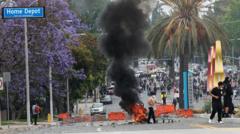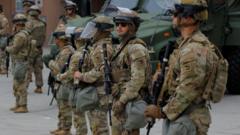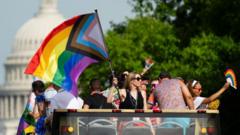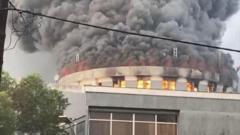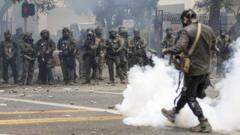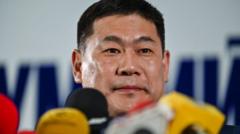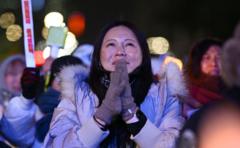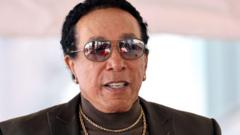Tensions in Los Angeles have reached a boiling point as protests against immigration raids led President Trump to deploy National Guard troops, further intensifying the situation in an already politically charged environment.
National Guard Deployed Amidst Protests in Los Angeles Over Immigration Raids

National Guard Deployed Amidst Protests in Los Angeles Over Immigration Raids
Protests escalate in Los Angeles as the National Guard is sent in following clashes over immigration enforcement.
In a surprising turn of events, President Trump authorized the deployment of at least 2,000 National Guard troops to Los Angeles in response to escalating protests against immigration raids. Arriving amid chaos, around 300 troops have already made their presence known in the city, with hundreds more scheduled to follow.
The conflict ignited when law enforcement used tear gas and crowd-control tactics against demonstrators protesting outside a downtown detention center. This aggressive response has sparked strong criticism from California's Governor Gavin Newsom, who framed the deployment of the National Guard as a "serious breach of state sovereignty."
Trump, invoking federal authority, justified the decision by labeling any protest that obstructed immigration officials as “a form of rebellion.” Newsom, standing in stark opposition, described Trump’s actions as "purposefully inflammatory," portraying this as a deliberate provocation amid a politically contentious landscape.
The protests first emerged in downtown Los Angeles before spreading to Paramount, a city with a significant Latino population. This unrest signifies a flashpoint on immigration — a core issue for Trump, who thrives on confrontation with liberal states while fortifying his political agenda.
With initial protests igniting in predominantly Latino neighborhoods, fears surrounding enforcement actions and immigration crackdowns have cast a shadow over local events, including the upcoming World Cup where many are apprehensive about potential immigration raids.
The conflict ignited when law enforcement used tear gas and crowd-control tactics against demonstrators protesting outside a downtown detention center. This aggressive response has sparked strong criticism from California's Governor Gavin Newsom, who framed the deployment of the National Guard as a "serious breach of state sovereignty."
Trump, invoking federal authority, justified the decision by labeling any protest that obstructed immigration officials as “a form of rebellion.” Newsom, standing in stark opposition, described Trump’s actions as "purposefully inflammatory," portraying this as a deliberate provocation amid a politically contentious landscape.
The protests first emerged in downtown Los Angeles before spreading to Paramount, a city with a significant Latino population. This unrest signifies a flashpoint on immigration — a core issue for Trump, who thrives on confrontation with liberal states while fortifying his political agenda.
With initial protests igniting in predominantly Latino neighborhoods, fears surrounding enforcement actions and immigration crackdowns have cast a shadow over local events, including the upcoming World Cup where many are apprehensive about potential immigration raids.

